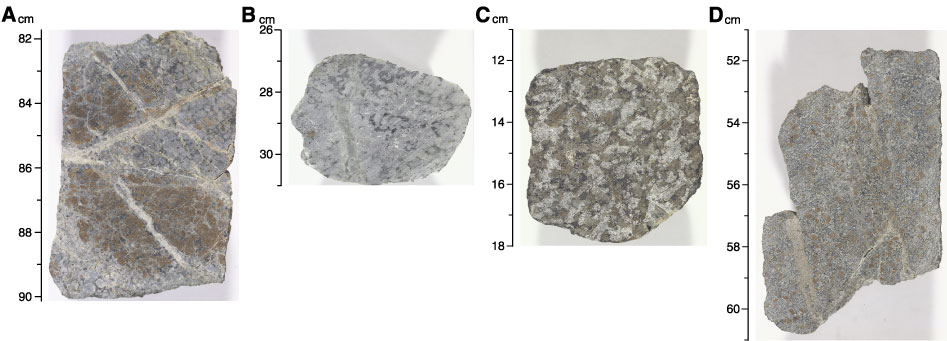
Figure F45. Photographs showing an overview of alteration of troctolites and gabbroic lithologies in Hole 1275D. A. Typical alteration of a troctolite showing olivine alteration to serpentine overprinted by iron oxyhydroxides, carbonates (red), and talc (gray). In the areas with iron hydroxides, rare fresh olivine is preserved in the kernels of the serpentine mesh texture. In the areas of talc alteration, serpentine and olivine crystals are replaced by talc (white). Igneous veins crosscutting the troctolite (green) are completely altered to green amphibole (interval 209-1275D-5R-1, 82–90 cm). B. Troctolite is altered to talc with olivine completely replaced by pseudomorphic talc (white). Pervasive talc alteration of troctolites is common near diabase dikes and gabbroic intrusions (interval 209-1275D-1R-2, 26–31 cm). C. Hand specimen of moderately altered gabbro (interval 209-1275D-20R-1, 11–18 cm). The alteration of the gabbro is dominated by replacement of pyroxene by aggregates of fibrous green amphibole and rare brown amphibole. D. Hand specimen of olivine gabbro showing olivine replaced by red iron oxyhydroxide and carbonate. Clinopyroxene is replaced by green amphibole and plagioclase is largely fresh. The sample is crosscut by felsic veins and late, vuggy carbonate veins (interval 209-1275D-33R-1, 52–61 cm).



![]()